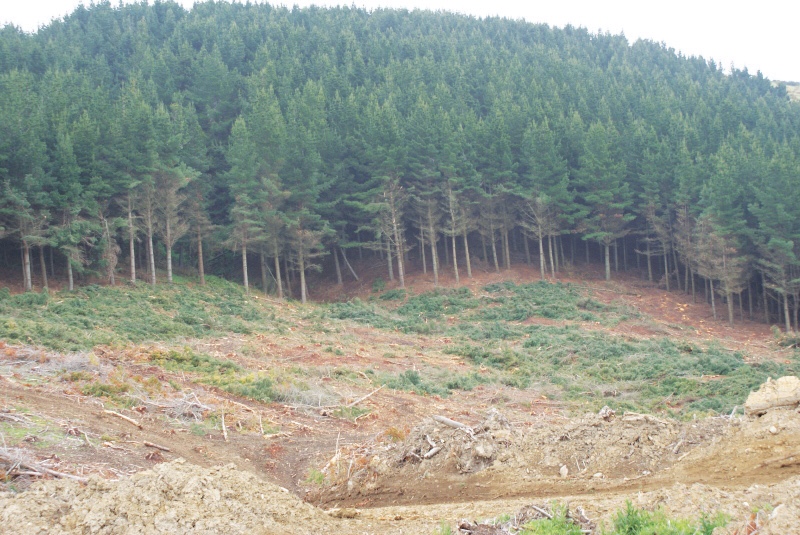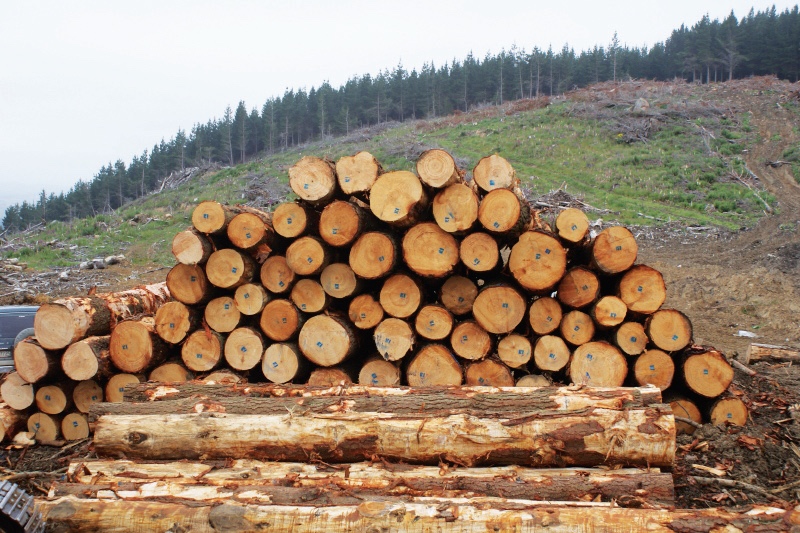South Otago Branch President A bit more than a farm forester
Ken Jones, New Zealand Tree Grower February 2011.
If you stop making a profit in any venture you undertake, you should make changes to arrest the decline or you should get out of the venture. This is one of the philosophies of Eion Young, head of the successful Young Partnership business ventures based at Kaihiku, west of Balclutha. Another point Eion makes is that it is important to have a mixed income stream in his type of business to make it successful. He should know, as it has been a rocky road at times and a good learning experience over the years, fortunately with not as many setbacks as successes. You cannot win them all would apply to this business as it does to most ventures.
Starting early
Eion got his start from his parents, Bob and Ruby Young, who began with the 360 hectare home farm and bought up other properties when they could afford it. One of these properties was a hill block on the north face of the Kaihiku range.
Starting in 1971 with the assistance of the forestry grant scheme, this block was progressively planted in radiata pine.
By 1995 a total of 160 hectares had been planted, including six hectares of macrocarpa. The oldest block of 40 hectares has been logged and mostly replanted.
Eion’s own logging gang is now working on a second area of 40 hectares, which reaches up to the top of the hill at 400 metres, and which were planted in 1979. The pruned butts are transported eight kilometres to be processed at the factory on the home farm.

Lessons learned
Some of Eion’s lessons learned and observations made −
- It is a waste of time and money pruning if you do not finish up with at least a 40 cm diameter small end log, whether it is radiata or macrocarpa.
- If you do not thin, your logs will seldom reach 40 cm small end diameter.
- The best logs harvested came from areas thinned to about seven metres by seven metres, or a maximum of 300 to the hectare.
- You have to be ruthless when thinning and this can be hard to do when thinning to waste. Thinnings are mostly unprofitable to log and many farm foresters have found this out the hard way.
- After the main thinning it is essential to go back in three to six years to remove any rubbish trees, mainly those that are not going to make it to final harvest. This makes the harvest a simpler and more profitable exercise.
In 1994, in the midst of the planting boom, Eion purchased 200 hectares in the Beaumont area. This steep escarpment on the east side of the Clutha River was progressively planted in radiata until the year 2000. Silviculture of this forest has been a substantial cost, at about $80,000 a year, but is now mainly completed. Eion was pleased to be told by a valuer that this was one of the finest form blocks he had seen. His son Stephen has an adjoining block of 40 hectares which he has planted in Douglas fir.
Processing
The processing part of the operation began with a kiln installed in 2000. This coal-fired dryer handles 70 cubic metres of mainly 50 mm timber. When contracts for drying slowed down, Eion added a planing machine which can produce mouldings of various shapes, and then a finger-jointer that adds value to timber from knotty logs. When these short pieces of clearwood are glued together the resulting board is stronger than a naturally cut board. This is an important part of the process with 80 cubic metres a month joined this way.

The last part of the operation to be added was a one man operated Mahoe saw. This simple portable saw can handle logs of any size and the resulting sawdust and wood chips are sold to local dairy farms for their wintering pads.
At one stage, when Eion was exporting products to Europe and the USA, 22 people were employed in the processing business. With the global downturn and high exchange rate Eion decided that export markets were too fickle and he now concentrates on the domestic market, so the work force has been reduced to nine.
Well balanced forestry
The clearwood goes into door jambs and window frames while the finger-jointed product often ends up as ceiling battens. Roughly 250 cubic metres of timber a month are processed from about 500 tonnes of logs. Half of these are bought in. With the additional income now available from carbon credits, and much of the big expenditure of forest establishment behind them, Eion feels their forestry operation is well balanced for a profitable future.

Cropping has always been the main activity of the farming operation and this season, following the purchase of a 430 hectare property near Clinton, they are growing more than 600 hectares of wheat, barley, ryegrass and peas.
A recent addition to the range of crops is Chinese cabbage, grown for the seed. Not content with simply growing the grain, Eion has for many years dried, mixed and exported various soup mixtures. Currently they supply and mix most of the ingredients including alphabet pasta for a 500 gram packet of soup mix to a national grocery chain.
These are just some of the activities of our president, a successful survivor in a tough industry. His final observation is that land is always a great investment.

 Farm Forestry New Zealand
Farm Forestry New Zealand